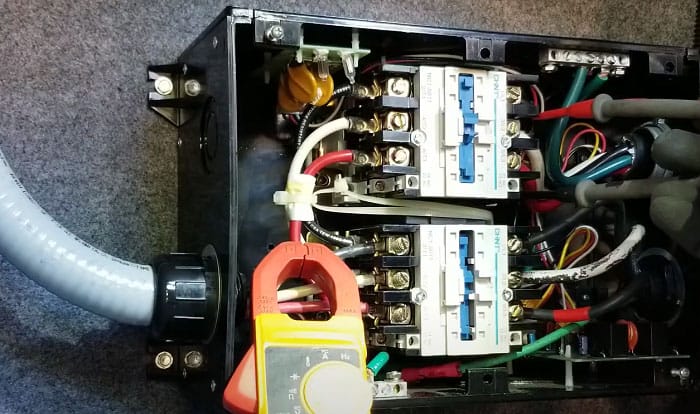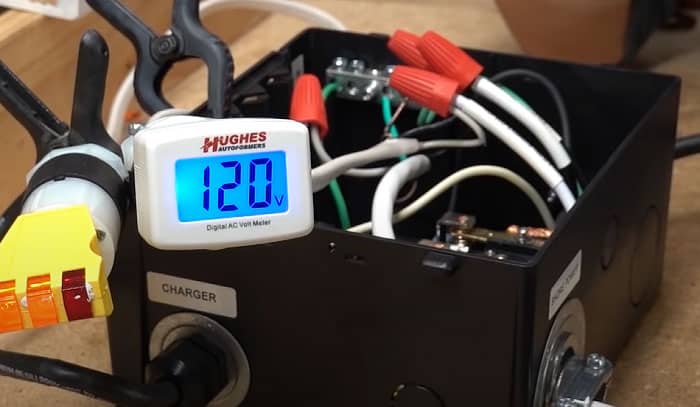It can be cumbersome to go in and out of your RV to change power sources. An automatic transfer switch RV can help in significantly reducing and perhaps eliminating this concern. But how does an RV automatic transfer switch work?
An RV automatic transfer switch is responsible for changing the source of the power drawn to the rig without a significant need for human intervention. It functions by reading the electricity from the RV’s generator and shore power and choosing the correct location to draw electricity efficiently.
Table of Contents
What Is a Transfer Switch?
Before understanding how an RV transfer switch works, it’s important to know about this device. As its name implies, it allows rig users to switch from the RV’s generator to shore power.
Take note that transfer switches often come in two general types: manual and automatic. Here’s a quick look at these two types of transfer switches for campers:
1. Manual Transfer Switch
Generally, a manual motorhome transfer switch is the less expensive option when compared to its automatic counterpart. It also typically uses relatively straightforward features to enhance user convenience.
However, this type of transfer switch demands human intervention. So it usually demands RV users to go to the control module to change power sources.
2. Automatic Transfer Switch
When connected to a generator in a power outage, an automatic transfer switch takes only 10 to 30 seconds to draw the generator’s electricity.
Additionally, an RV automatic transfer switch wiring diagram is also more complex. For that reason, installation procedures may require certified electricians.
How Does an Automatic Transfer Switch in an RV Work?
Also called an ATS, an automatic transfer switch in an RV connects to the rig’s generator and the main electrical panel or shore power. It functions by switching the power automatically if it detects faults in one of these power sources.
1. The System
ATS systems generally have four blocks for their main power monitoring and switching functions, which are:
- Relay switching
- Timer relay
- Contactor switching
- Digital multimeter
Among these four blocks, the relay switching module is usually the voltage monitoring unit. Once the voltage’s read, it sends the information to the other blocks for them to make the appropriate actions.
2. Power Commencing and Switching
It typically takes about 1.5 to 2 seconds for an RV generator to start producing power, a process called the Time Delay Engine Start (TDES). After TDES, the transfer switch ensures the generator reaches the right voltage at a safe pace. Otherwise, a surge might occur if the power created is too fast.
While the generator’s power is being used, the ATS continues to monitor the utility electricity. When the utility goes back to working, the ATS ensures the generator cools off prior to shutdown, thanks to the Time Delay Cooldown (TDS) protocol.
With the TDES and TDS working together, ATSs can provide sufficient power to connected appliances without significant risks of running into serious issues.
3. Power Load Monitoring
If installed correctly, a reliable ATS automatically monitors the power status of connected sources. Inside the ATS is a smart control system, consisting of different relay and contractor switches. These components ensure that the power switches happen when needed and reduce the risks of potentially expensive mishaps like short circuits.
Oftentimes, this monitoring framework comes from a single-phase connection from the generator to the shore power. The system then finds the most stable power source and tells the rest of the ATS to use that location as an origin point.
Quality ATS systems check for different power load readings, including unusual voltage measurements.
4. Overload Protection
Another core function of a reliable ATS is to protect connected electronics from overloads or abrupt energy drops. If the system detects rapid changes to the drawn power, it switches to the next available power source.
How to Maintain an RV Automatic Transfer Switch?
Despite RV ATS systems not demanding significant care, rig owners should still do the bare minimum to ensure their switches don’t break down soon. Some techniques to keep the ATS functioning properly are:
1. Turn Off the RV Thermostat
Keep in mind that RV transfer switches usually have two relays or solenoids. These components are responsible for passing the power to contacts that open and close when the circuits are down.
When this happens, there may be an arc, especially if you’re running high-load appliances in the RV. If so, it’s ideal to turn off the thermostat to help minimize the current power drawn.
2. Clean the Contacts
Sometimes the electrical contacts can become dirty. If that scenario happens, electricity transference will become problematic. Use fine sandpaper of about 400 grit to remove the rust or particle buildup from the contacts to restore proper function to the ATS.
3. Whack the ATS
If the transfer switch becomes sticky, it can be a good idea to use your hand and whack the system to help unstick it. However, don’t use more force than necessary, or else the hit may misalign or remove some parts.
4. Screwing the Lugs
Oftentimes the lugs in the ATS can become loose. If so, screwing them back in place will help maintain the system’s efficiency in transferring energy sources properly.
How Do You Tell If the Automatic Transfer Switch Is Bad?
RV owners need to check if electricity from the shore power source reaches the transfer switch. If the electricity goes into the switch but the system doesn’t deliver it to the rig, then the problem lies with the ATS. Users would need to replace the ATS if it goes bad to ensure the electricity transferring system works as intended.
Conclusion
Understanding how does an RV automatic transfer switch work can also mean taking advantage of better energy consumption for camper users. Remember, an ATS system works by selecting the ideal energy source for specific scenarios.
Additionally, always keep in mind that an ATS can encounter issues without proper care. You can help maintain this system by:
- Turning off the thermostat to reduce power draw.
- Cleaning the ATS’s internal contacts.
- Whacking the system with your hand if it sticks.
- Screwing the lugs if they’re loose.

Hi, I am Joseph. Carpe diem! Seize the day! That’s always been my life motto. If you haven’t seen some of the most beautiful places in the country, you are missing out on incredible adventures.



